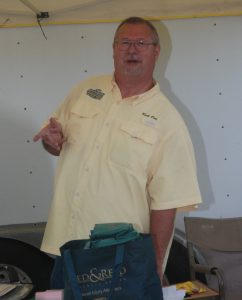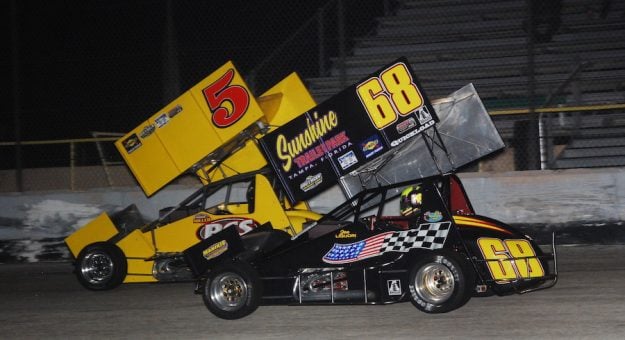Pavement sprint car racing has played an important role in Florida motorsports history.
Since the moment modern-day sprint cars were first introduced to the Sunshine State during the early 1950s, the interest was there and pavement sprint car racing in the state has been featured regularly ever since.
Nationally, that segment of the sport has struggled at times, but in Florida, the division has remained stable. In fact, during the 1970s and early ’80s, weekly sprint car racing was common at select Sunshine State facilities.

Florida has also played host to some of pavement sprint car racing’s biggest events, including the Golden Gate 500, Florida 500, Florida 400, Mopar Sprint & Midget Classic and the Dave Steele World Non-Wing Sprint Car Championship.
In addition, the World of Outlaws and All Star Circuit of Champions have sanctioned pavement sprint car events in Florida.
In 1972, a group of drivers and car owners got together and formed their own series. Jimmy Dodd and Bill Know created the Tampa Bay Area Racing Ass’n. No points were kept that first season, but the series competed on both dirt and pavement. The series was organized as a club and owners and drivers would vote on club leadership, rules and race procedures.
Points were kept for the first time in 1973 and Billy Yuma was crowned the first champion. Following the 1974 season, the series was shelved until 1982. When it returned, it included a healthy number of pavement events.
After the 1981 season, USAC removed pavement racing from its national sprint car series for the next seven seasons. This had a profound impact on pavement sprint car racing across the country. Outside of the Little 500 and Copper World Classic, pavement sprint car events were virtually non-existent. The few that soldiered on required the aid of supermodifieds to ensure enough cars to put on a show.
However, pavement sprint car racing remained strong in Florida. Car counts were good with several new specialty pavement cars being built.
By 1998, TBARA club members voted to race solely on pavement. The series carried on as a winged pavement club until 2014 when members voted to shut it down amid severe turmoil.
With no pavement sprint car club in 2015, Florida tracks began to run their own shows. Some were winged, while others were non-winged events. Tracks were also running various tire brands based on what brand of rubber that track ran on a weekly basis. It seemed as if pavement sprint car racing was teetering on the edge extinction.
Showtime Speedway owner Robert Yoho ran seven successful winged events at his track in 2015. It led to talks among race director Rick Day, car owner Taylor Andrews and Yoho about creating a new pavement sprint car series to compete in the state of Florida.
“We’d been talking about it for a while,” Day noted. “I really didn’t want to do it to start with. Over time, and talking with Taylor (Andrews), one thing led to another. We finally sat down and had a meeting and put some things together. We decided we were going to do it, took the ball and ran with it.
“Taylor and Robert (Yoho) had been talking about it for a while before they approached me,” Day added. “Robert then started talking to me and telling me what he was thinking. He approached me with the idea because I had the contacts with all the race tracks due to running other series in the past. We went over to Taylor’s and chatted about it. Two hours later, the Southern Sprint Car Shootout Series was born.”
It was important for the group to stay away from the club structure that TBARA had utilized.
“It’s a voting deal where you’ve got 30 members and 30 different opinions,” Day explained “One group wants this thing and that group that wants another. As to where, when it’s a privately owned corporation, we can do what’s best for the series and move forward, versus having board meetings with constant arguments. We value everyone’s opinion, but you have to do what’s ultimately best for the series and the advancement of sprint car racing in the state of Florida.
“Unofficially, Yoho, Andrews and myself were the owners of the series when it was put together,” Day said. “It was the three of us as a group. As we grew and things developed, we formed a corporation, branched out and did our own thing.”
In the beginning the, trio reached out to the Dave Steele for his advice on a variety of issues.
